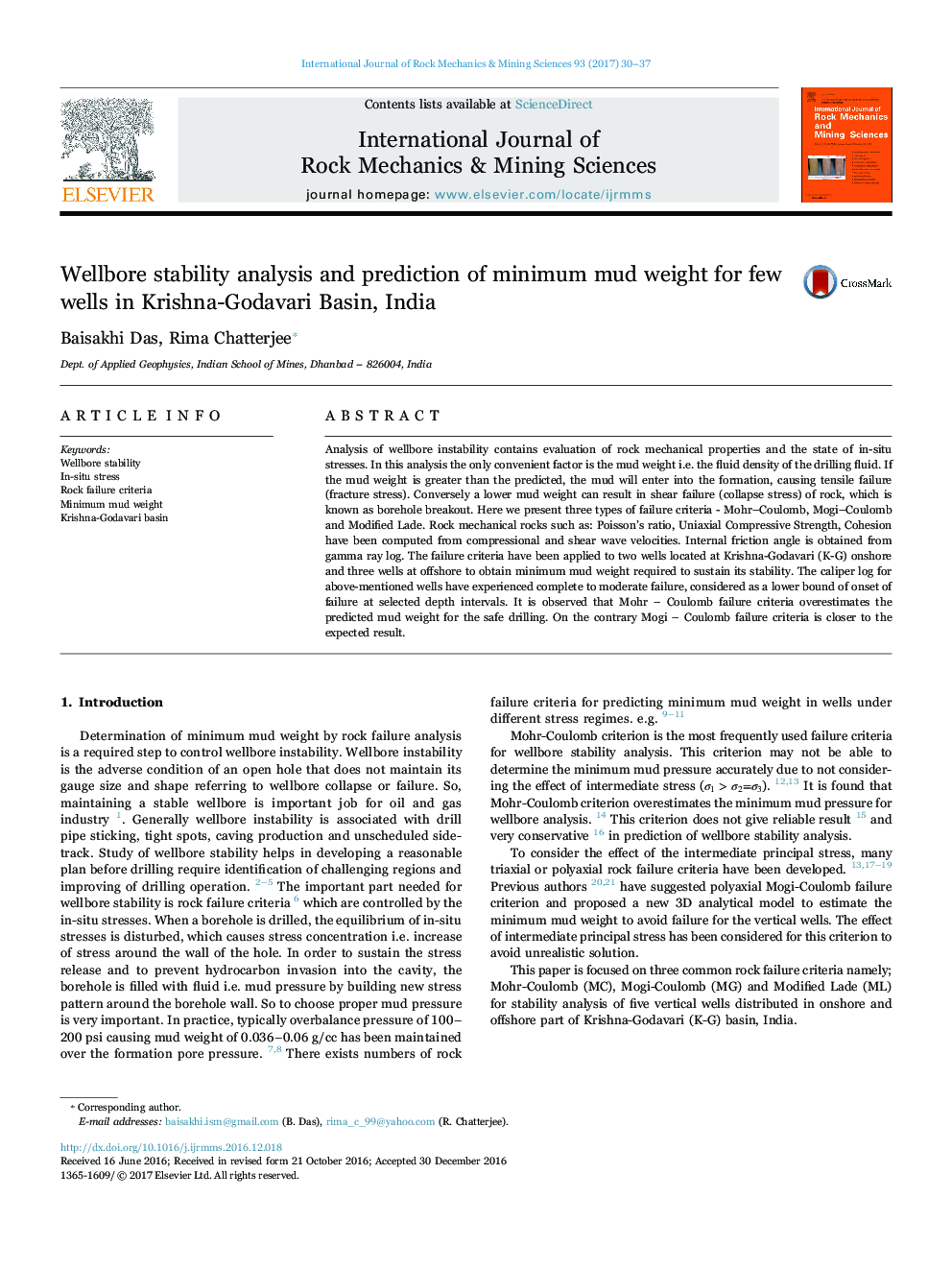| Article ID | Journal | Published Year | Pages | File Type |
|---|---|---|---|---|
| 5020255 | International Journal of Rock Mechanics and Mining Sciences | 2017 | 8 Pages |
Abstract
Analysis of wellbore instability contains evaluation of rock mechanical properties and the state of in-situ stresses. In this analysis the only convenient factor is the mud weight i.e. the fluid density of the drilling fluid. If the mud weight is greater than the predicted, the mud will enter into the formation, causing tensile failure (fracture stress). Conversely a lower mud weight can result in shear failure (collapse stress) of rock, which is known as borehole breakout. Here we present three types of failure criteria - Mohr-Coulomb, Mogi-Coulomb and Modified Lade. Rock mechanical rocks such as: Poisson's ratio, Uniaxial Compressive Strength, Cohesion have been computed from compressional and shear wave velocities. Internal friction angle is obtained from gamma ray log. The failure criteria have been applied to two wells located at Krishna-Godavari (K-G) onshore and three wells at offshore to obtain minimum mud weight required to sustain its stability. The caliper log for above-mentioned wells have experienced complete to moderate failure, considered as a lower bound of onset of failure at selected depth intervals. It is observed that Mohr - Coulomb failure criteria overestimates the predicted mud weight for the safe drilling. On the contrary Mogi - Coulomb failure criteria is closer to the expected result.
Related Topics
Physical Sciences and Engineering
Earth and Planetary Sciences
Geotechnical Engineering and Engineering Geology
Authors
Baisakhi Das, Rima Chatterjee,
